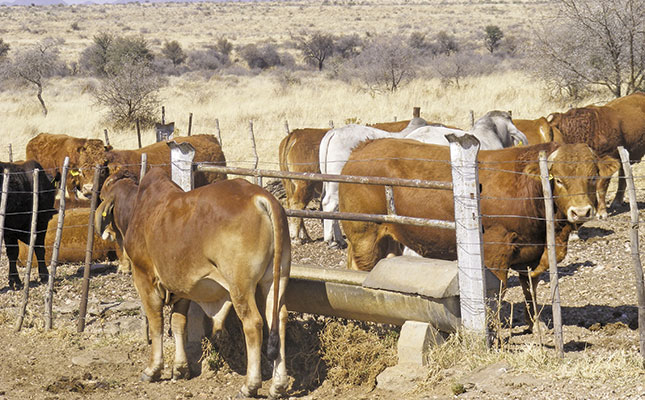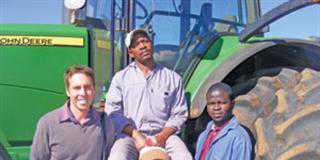
Photo: FW Archive
The economic term ‘cost-price squeeze’ is often used in agriculture to describe the relationship between income and expenses, and more specifically, the rate of increase of both variables. It relates to a situation where average expense increases at a faster rate than the accompanying average income for a specific agricultural sector.
However, it is difficult to quantify and keep track of the actual rate at which the average input price increases more than the accompanying average price of output over time. For this reason, the Namibia Agricultural Union (NAU) developed the Production-Cost Index, which keeps track of the income-expense relationship and how it changes over time. Such information is crucial, and highlights the importance of quantifying the effect of the cost-price squeeze phenomenon.
The index is based on a basket of products for each farming expense category. A weighting is allocated to each category based on its size relative to the total farming expenses of the average livestock farming enterprise in Namibia. The same is done for income, which is primarily based on the relative price of sheep and cattle over time.
The relative cattle price consists of an appropriately weighted (in terms of marketing volumes) combination of the average weaner and average carcass price. After appropriately weighing the expenses and income, these are indexed from a specific base year. This allows for an effective comparison of changes from the base year onwards. Therefore, by using this Production-Cost Index, the cost-price squeeze phenomenon can be quantified and monitored over time.
The international picture
Since the global economic crisis of 2008/2009, an increasing cost-price squeeze has been a worldwide phenomenon in most agricultural sectors. The United Nation’s Food and Agriculture Organisation has forecast that the real prices of agricultural commodities may decline for another decade. Namibia is no exception. The cost-price squeeze is evident in both its cattle and sheep industries, resulting in a decline in the real prices of beef/cattle and mutton/sheep.
Concerns over cattle
The Production-Cost Index for the third quarter of 2015 continued to indicate an increasing cost-price squeeze in the cattle industry, with the sheep industry reflecting a more positive scenario due to more robust sheep price increases over the 10 years of monitoring.
Measured from the base year of 2006 (first quarter 2006 = 100), cattle income increased to end at 157,64 basis points (bps) in the third quarter of 2015, while total expenses increased to 242,68 bps over the same period (Figure 1). On the other hand, sheep income ended at 258,59 bps (Figure 2), keeping up with the rise in expenses over the 10-year period.


The large degree of diverging input and output prices in the cattle industry over the past 10 years, as reflected in Figure 1, led to an average annual cost-price squeeze of 7,54% from the first quarter of 2006 to the third quarter of 2015. The sheep industry reflected a much more manageable 2,33% over the same period.
The worrying price trend in Namibia’s cattle sector, which has been especially visible since the beginning of 2012 (Figure 1), is also supported by comparing the average EU and UK R3 steer prices (converted to Namibian dollars to account for the exchange rate effect) to the Namibian A2 carcass price (Figure 4). The sharp increase in the EU and UK prices (NAD) since the beginning of 2012, as seen in Figure 4, was primarily due to the weakening of the Namibian dollar against both the euro and pound.

Despite Namibia exporting a significant portion of its beef cuts to the EU and UK markets, the exchange rate advantage evident since 2012 did not have the desired effect on the Namibian carcass price. This was due to significant challenges in terms of drought since 2013, stagnant slaughter numbers at local export abattoirs, a tough global economic climate, and several other factors which depress local producer prices.
The effects of the 2012/2013 drought is evident in both Figures 1 and 2. During this period, both cattle and sheep prices dropped significantly, with a slight acceleration in expenses during the same period. The 2014/2015 season also turned out to be a challenging time, with below-average rainfall figures for much of Namibia.
As a consequence of the drought, the marketing of livestock has increased significantly since the beginning of 2015. Record figures were achieved in the third quarter of 2015, with 83 125 head of cattle exported live to South Africa in July, August and September.
Increasing inflation rates
The latest on-farm inflation rate, as reflected in Figure 3, ended on 4,9% for the third quarter of 2015, up from the 2,72% recorded in the second quarter of 2015, but still significantly down from the 12,18% registered in the first quarter of 2014.

The lower average on-farm inflation rate for 2015 when compared with 2014 was driven by the sharp drop in oil prices experienced since the second half of 2014, with iron ore and steel prices also plummeting over the past 12 months. The fall provides welcome relief for Namibian farmers, especially during a period of drought and tough global economic conditions. As many farming inputs are imported from South Africa, fuel (for transport) makes up a significant portion of the price of these products.
Space to improve
The Production-Cost Index accentuates the fact that Namibian livestock producers need to constantly increase production and improve efficiency to keep current profit margins intact. Precision farming, the theme of this year’s Livestock Producers’ Organisations’ Congress, should be taken more seriously by farmers. It has the potential to significantly increase production and efficiency during a time when profit margins are under pressure.
Adopting smarter and more cost-efficient technologies is crucial; the increasingly popular solar energy technology is an excellent example. Farmers also need to increase the carrying capacity of their farms, especially in the north-central parts of Namibia, where bush encroachment has become a serious problem. Bush thinning is already administered by individual farmers, with proven benefits in terms of production and economies of scale advantages.
Despite the challenges that the livestock industry faces, there are still many opportunities to overcome these and grow the industry. – Annelie Coleman
Phone Jaco Hanekom on +264 61 237838 or email [email protected].
This article was originally published in the 18 December 2015 issue of Farmer’s Weekly.













